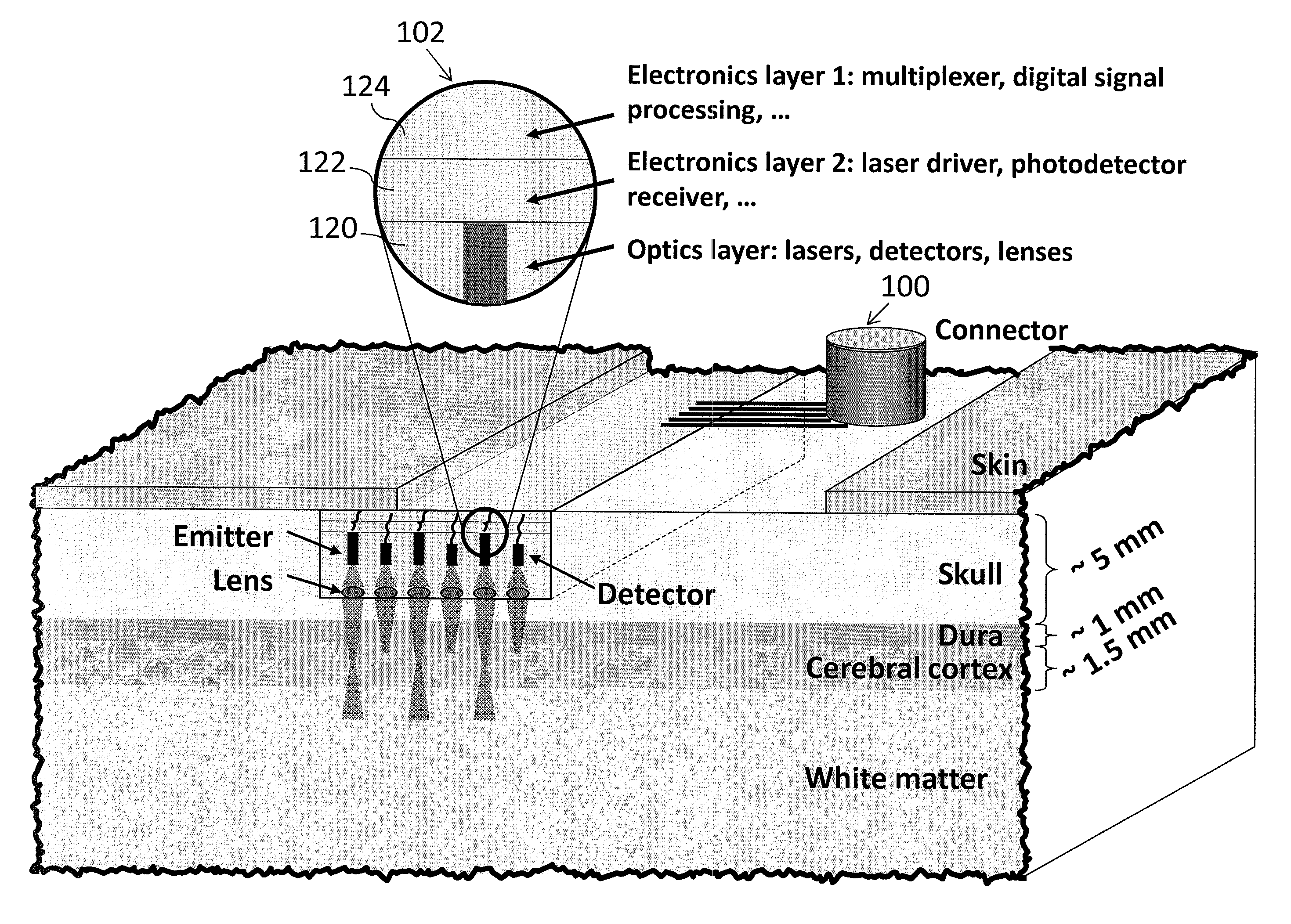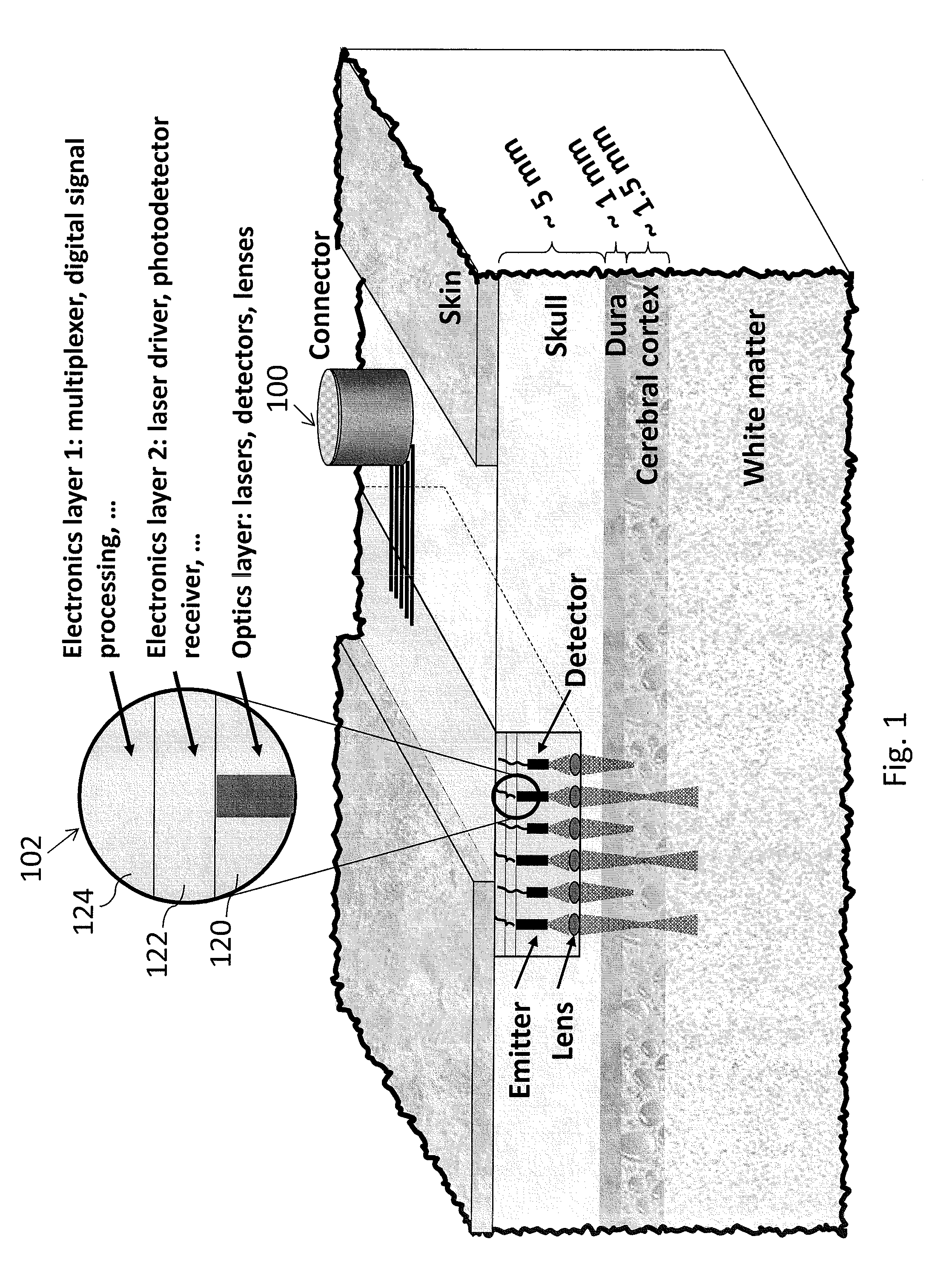Implantable sensing arrangement and approach
a sensing arrangement and implantable technology, applied in the field of integrated microcircuit arrangement, can solve the problems of limited use, undue spatial resolution limitation of techniques, and limit the ability to track neuronal signals, and achieve the effect of facilitating high-selective sensing of cerebral cortex areas
- Summary
- Abstract
- Description
- Claims
- Application Information
AI Technical Summary
Benefits of technology
Problems solved by technology
Method used
Image
Examples
Embodiment Construction
[0022]The present invention is believed to be applicable to a variety of different types of devices and sensing approaches. The invention has been found to be particularly suited for sensing characteristics of biological substances, such as cerebral cortex matter, with an integrated circuit arrangement adapted for emission and detection. While the present invention is not necessarily limited to such applications, various aspects of the invention may be appreciated through a discussion of various examples using this context.
[0023]One aspect of the present invention integrates optoelectronics and / or micro-optics sensing circuitry for directing an emission to a cerebral cortex and detecting a response such as reflectance or fluorescence therefrom. The response can be used for detecting or otherwise identifying characteristics of the cerebral cortex.
[0024]The integrated circuitry is located substantially immediately adjacent to the cerebral cortex in a manner that facilitates the detect...
PUM
 Login to View More
Login to View More Abstract
Description
Claims
Application Information
 Login to View More
Login to View More - R&D
- Intellectual Property
- Life Sciences
- Materials
- Tech Scout
- Unparalleled Data Quality
- Higher Quality Content
- 60% Fewer Hallucinations
Browse by: Latest US Patents, China's latest patents, Technical Efficacy Thesaurus, Application Domain, Technology Topic, Popular Technical Reports.
© 2025 PatSnap. All rights reserved.Legal|Privacy policy|Modern Slavery Act Transparency Statement|Sitemap|About US| Contact US: help@patsnap.com



